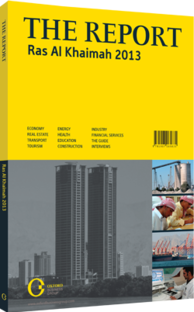Protecting Julfar: Unearthing a region of rich historical importance
Ras Al Khaimah has become an important part of the UAE since the formation of the union in the early 1970s. The emirate, however, has an ancient history that goes back more than 7000 years. There are traces of human activity in the region that date back to approximately 5500 BCE, and stone implements, beads, pottery and a variety of building structures point to a long history of trade and settlement. Mesopotamian pottery that dates as far back as 3800 BCE has been found at a number of archaeological sites across the emirate.
Protecting The City
Over the centuries, a number of empires have competed to rule the region, vying for control over the invaluable maritime trade routes into the Gulf. The deep harbours and strategic location of RAK at the crossroads of major maritime routes attracted traders from across the world and allowed its rulers to control this trade.
The region also had an abundance of fishing, hunting and agricultural space, and provided ample resources for these settlers. The waves of invasions and settlements left the area with a number of forts and other defensive structures that still stand today. RAK was ringed by several towers that once formed a defensive system around the area. Several forts also served to protect the ruling families. The most prominent are the Dhayah Fort and the Al Qasimi Fort.
Qawasim Tribe
RAK is in fact the new name for the region. Julfar, as it was known before, gradually grew due to trade and became a key part of successive empires including the Sassanid empire between 300 and 600 CE, the Umayyads and the Abbasids, and the princes of Hormuz after 1300 CE.
A study published by Geoffrey King likens Julfar to modern-day Dubai, describing local merchants there as “wholesale dealers, persons of worth and great navigators”. The Portuguese controlled much of this trade until the entry of the British into the region in the late 1600s. In parallel, a new power, the Qawasim, emerged by the late 1700s, which had a reputation for its naval prowess, threatening British interests in the region.
Dhayah Fort
British forces launched assaults against RAK repeatedly, eventually landing a large army to attack the ruling tribe. The British pushed the local forces north into Rams, where the tribal leaders had taken refuge in the Dhayah Fort. Despite being a small fort capable of holding only a limited force, the local Qawasim tribe held the British at bay for several weeks. However, the fort was eventually taken by the invading army.
The surrender of the Qawasim in 1820 finally ended hostilities between the two powers. RAK’s rulers signed a truce offering exclusive trading rights in exchange for Britain’s protection from external forces, heralding a period of relative peace and economic growth in RAK.
The fortress at Dhayah is reputed to be the only hilltop fort still standing across the entire UAE. Its location at the base of the Hajar Mountains had been used for centuries by ancient settlers to defend against invading forces. The fortress was first built in the 16th century, with additional fortifications added by the Qawasim tribe in the early 19th century. The ruling family continued using the fort as a home until 1964 and then converted it into a prison.
The structure that stands today is closely linked with the history of the Qawasim tribe and is a symbol for the current rulers, who are direct descendants of the tribe. The fort has been preserved and is now a major tourist attraction in RAK, as well as the UAE.
National Museum Of Rak:
The Al Qasimi Fort, located within the boundaries of what is now downtown RAK, also served as a home for the ruling Qawasim tribe. It did not play as significant a role in defending against the British invasion as the Dhayah Fort did, but the site once served as a military base for Nadir Shah, the ruler of Iran, in the mid-18th century.
The fort is well preserved and is currently adapted to serve as the National Museum. It houses the treaties signed between the British and the Qawasim rulers, and also showcases RAK’s ancient history, with a number of rooms displaying ceramics and other historical artefacts that have been found throughout the region.
You have reached the limit of premium articles you can view for free.
Choose from the options below to purchase print or digital editions of our Reports. You can also purchase a website subscription giving you unlimited access to all of our Reports online for 12 months.
If you have already purchased this Report or have a website subscription, please login to continue.

